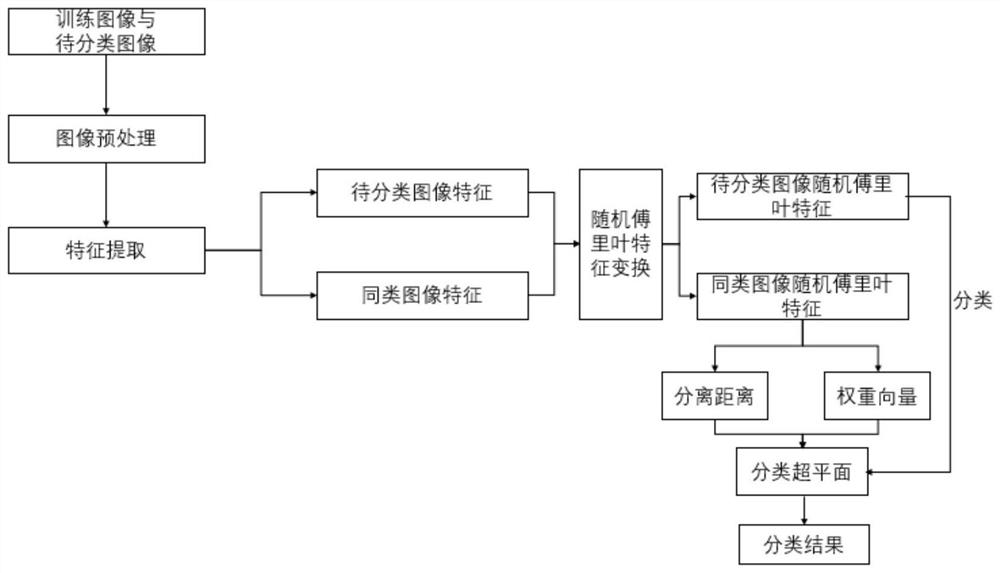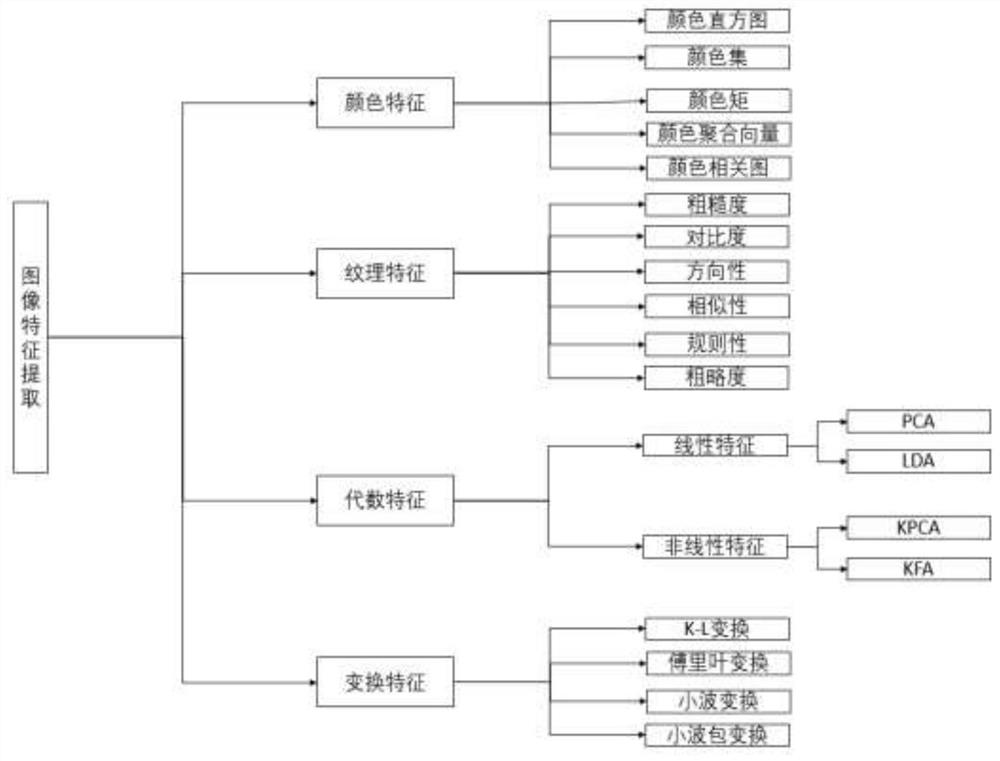Image classification method based on random Fourier feature transformation
A technology of feature transformation and classification method, applied in neural learning methods, computer parts, instruments, etc., can solve the problem of unsatisfactory algorithm accuracy and time complexity, high time complexity and algorithm complexity, and inconsistent selection of kernel functions. It can avoid the problem of neural network result selection and local minimum, low time and space complexity, and good generalization.
- Summary
- Abstract
- Description
- Claims
- Application Information
AI Technical Summary
Problems solved by technology
Method used
Image
Examples
Embodiment 1
[0053] This example elaborates in detail the classification method and results when an image classification method based on random Fourier feature transform is implemented in the case of plant image classification.
[0054] The data set in this example comes from the Iris data set in the UCI database. The Iris data set includes three types of iris flower images, and the amount of data for each type is 50; Figure 4 is an image in the Iris dataset.
[0055] The data in this data set is the data whose features have been extracted, and the Iris image data x i , n is the amount of data, which is 150; d is the feature dimension, which is 4;
[0056] Apply the method described in the present invention, then directly start to implement from step 3, specifically:
[0057] Step 3.1, perform random Fourier feature transformation on the features of 10 similar Iris images (one type of data set in the optional Iris image), and obtain the data set z after random Fourier feature transforma...
Embodiment 2
[0079] This example elaborates in detail the classification method and results when the invention of an image classification method based on random Fourier feature transform is implemented in the case of sonar image classification.
[0080] The data set in this example comes from the sonar data set in the UCI database. The sonar data set includes two types of sonar images. The sonar images returned from the rock surface are 97 samples, and the sonar images returned from the metal surface are 111 samples. ;
[0081] The data in this data set is the data whose features have been extracted, and the sonar image data x is obtained i , n is the amount of data, which is 208; d is the feature dimension, which is 60;
[0082] Apply the method described in the present invention, then directly start to implement from step 3, specifically:
[0083] Step 3.1, carry out random Fourier feature transformation for 40 similar sonar images (one type of data set in the optional sonar image) fea...
Embodiment 3
[0104] This example elaborates in detail the classification method and results when the invention of an image classification method based on random Fourier feature transform is implemented in the case of handwritten digital image classification.
[0105] The data set in this example comes from the MNIST data set. The MNIST data set comes from the National Institute of Standards and Technology (NIST). The training set consists of numbers written by 250 different people, 50% of which are High school students, 50% are from the staff of the Census Bureau, including 60,000 samples; the test set is the same proportion of handwritten digit data, which is 10,000 samples. The data set includes 10 categories of data, which are handwritten Arabic numerals 1-9. Figure 5 A schematic diagram of the MNIST dataset. figure 1 It is a block diagram of an image classification method based on random Fourier feature transform, which introduces the main steps of this method. figure 2 It is a bloc...
PUM
 Login to View More
Login to View More Abstract
Description
Claims
Application Information
 Login to View More
Login to View More - R&D
- Intellectual Property
- Life Sciences
- Materials
- Tech Scout
- Unparalleled Data Quality
- Higher Quality Content
- 60% Fewer Hallucinations
Browse by: Latest US Patents, China's latest patents, Technical Efficacy Thesaurus, Application Domain, Technology Topic, Popular Technical Reports.
© 2025 PatSnap. All rights reserved.Legal|Privacy policy|Modern Slavery Act Transparency Statement|Sitemap|About US| Contact US: help@patsnap.com



